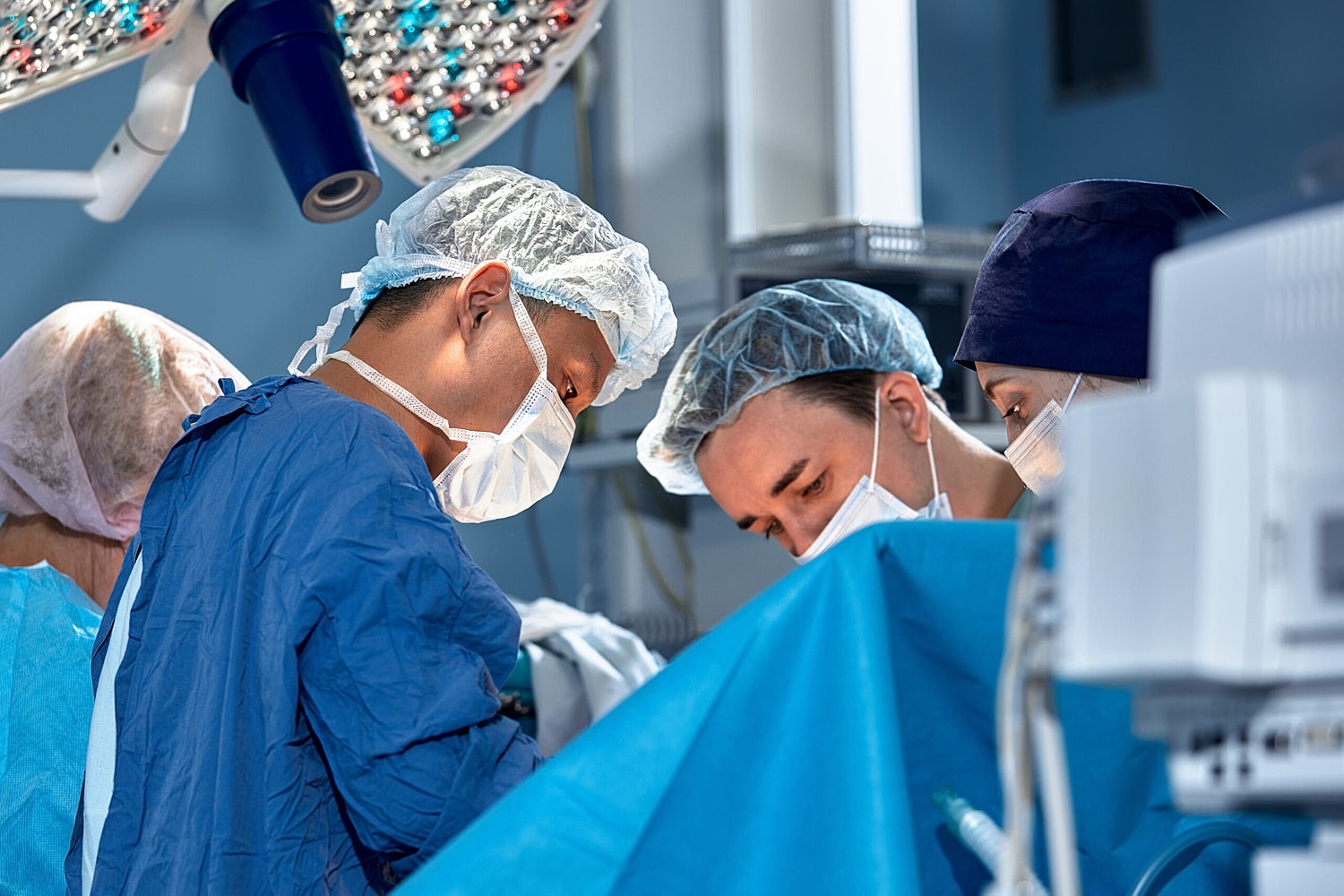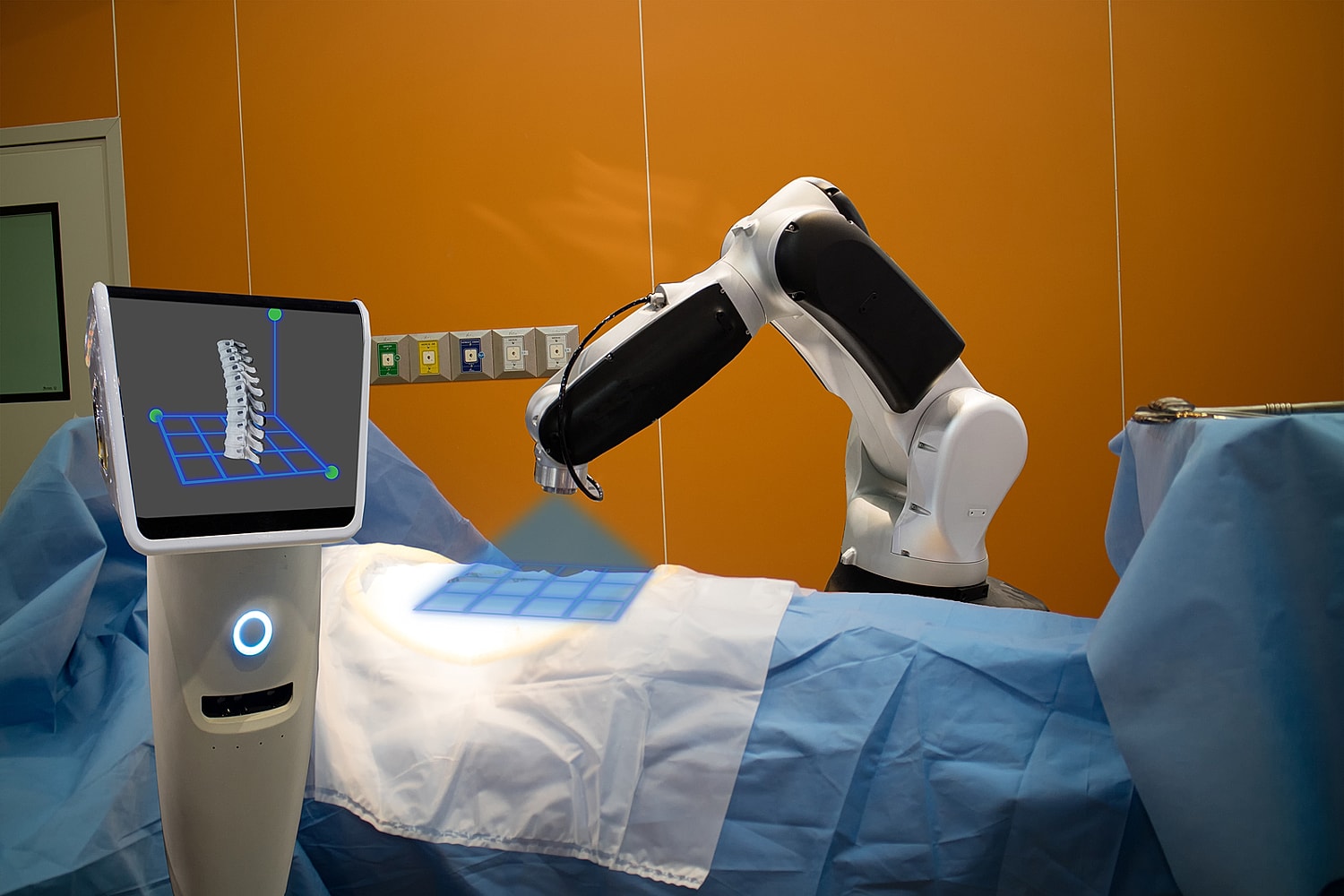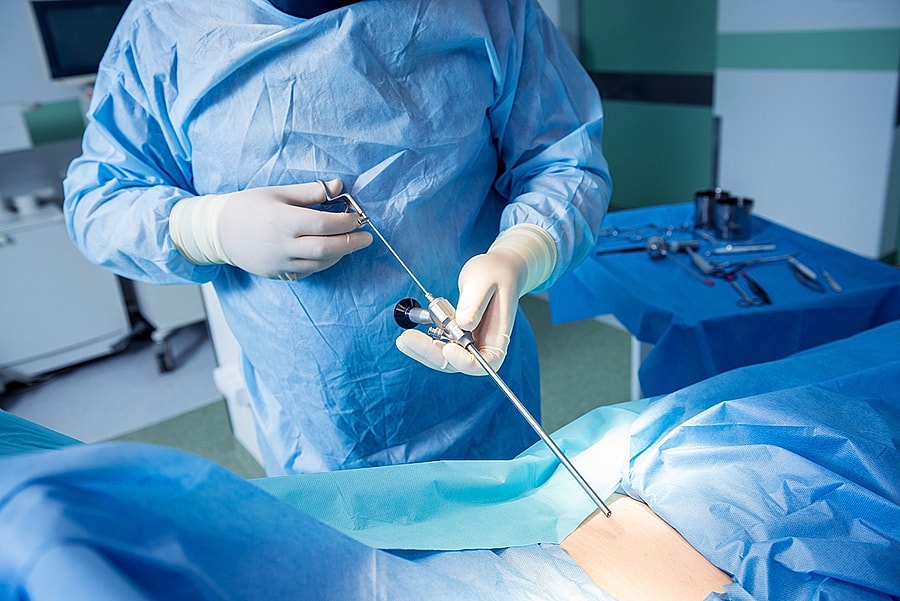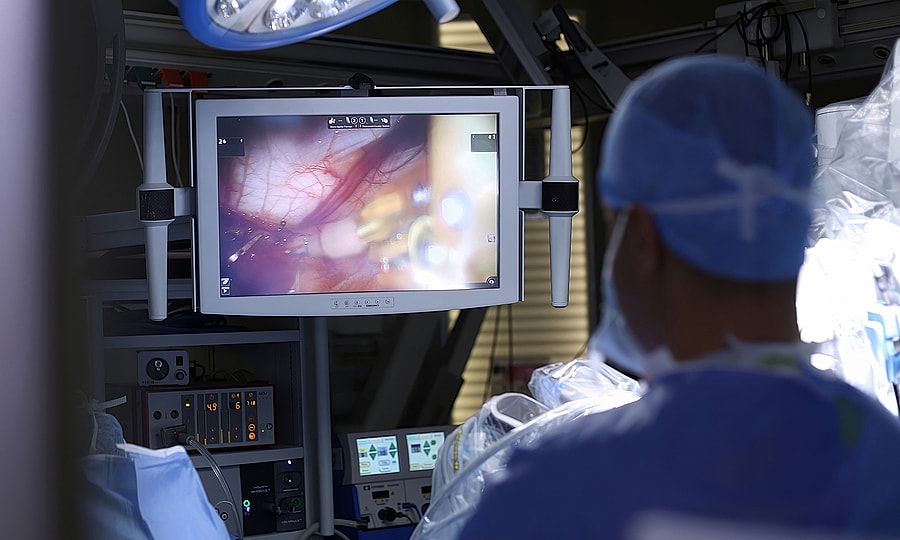
in New York & New Jersey

















For patients dealing with chronic back or neck pain, surgery is sometimes the next step—especially when nonsurgical treatments no longer provide relief. But surgery doesn’t have to mean large incisions, long recoveries, or guesswork.
With robotic technology, spine procedures have become more precise, less invasive, and easier to recover from. Our NJ and NYC robotic spine surgery incorporates advanced robotic systems to assist the surgeon in placing implants and performing spinal procedures with sub-millimeter accuracy.
This added precision helps reduce complications, shorten recovery time, and improve long-term outcomes. At the Institute for Comprehensive Spine Care, we recognize the intricate nature of spinal health issues and the significant impact they can have on your daily life. Led by the esteemed spine surgeon, Dr. Gbolahan Okubadejo, MD, FAAOS, we are dedicated to offering a wide range of surgical interventions, such as robotic spine surgery, and personalized care plans to relieve your discomfort and improve your mobility.
Robotic spine surgery is an advanced medical procedure that utilizes robotic technology to assist and enhance precision during spinal procedures.
It combines the expertise of the surgeon with the precision and accuracy of robotic systems. The surgical robot provides real-time feedback and aids in the execution of complex movements. During robotic spine surgery NYC & NJ spine surgeon, Dr. Okubadejo, guides the robotic arms to perform the procedure. The robot's advanced imaging and navigation systems help create a detailed map of your anatomy, allowing for the precise placement of implants, screws, or other instruments. Robotic assistance in spine surgery aims to improve surgical outcomes, minimize tissue damage, and enhance patient safety.

Robotic assistance is typically used in procedures involving spinal fusion, instrumentation, or alignment correction. Conditions treated include:
By improving accuracy and control, robotic technology helps both the patient and the surgeon. Key benefits include:
For the right patient, robotic assistance adds a level of confidence and control that helps support long-term results.

If you are experiencing chronic back pain, weakness, numbness, or mobility difficulties due to a degenerative spinal condition, spinal deformity, instability, or injury that hasn’t responded to conservative treatments like physical therapy or medication, you may be a candidate for robotic spine surgery.
However, your overall health and specific spinal condition play crucial roles in determining suitability. Robotic spine surgery is a sophisticated procedure, and ideal candidates generally have good overall health, are non-smokers, and have realistic expectations. Dr.Okubadejo will evaluate your individual circumstances, medical history, and treatment goals to determine if robotic spine surgery is the appropriate choice for you.

Most robotic spine procedures are performed using minimally invasive techniques, which allow for:
Dr. Okubadejo will provide a clear recovery plan tailored to your health, lifestyle, and surgical goals.
When robotic technology is used in the right setting, outcomes are often improved. Patients report:
Combined with expert surgical judgment, robotic assistance supports safer procedures and better long-term results.
Robotic surgery isn’t about replacing the surgeon—it’s about enhancing the expertise behind every movement. Dr. Gbolahan Okubadejo uses robotic technology when it helps create better, safer outcomes for his patients.
We understand the profound impact that spinal issues can have on your life, and our commitment is to help you regain control. Through meticulous diagnosis and tailored treatment planning, we provide ongoing support and guidance throughout your recovery journey. Collaboratively, we will develop a personalized treatment plan that aligns with your specific needs and goals. Dr. Okubadejo and our dedicated team will be by your side to ensure you achieve the best possible health outcomes. With offices throughout New York and New Jersey, advanced spine care has never been more accessible.
Dr. Okubadejo’s consistent 5-star reviews reflect his commitment to compassionate, patient-focused care and exceptional outcomes in spine treatment.
★★★★★






Robotic spine surgery offers enhanced precision, improved visualization, and real-time feedback to the surgeon, resulting in increased surgical accuracy, reduced tissue damage, and potentially faster recovery times compared to traditional techniques.
During robotic spine surgery, the surgeon guides robotic arms equipped with specialized instruments to perform the procedure. The robotic system utilizes advanced imaging and navigation technology to create a detailed map of the patient's anatomy, allowing for the precise placement of implants, screws, or other instruments. The surgeon remains in control throughout the surgery, with the robotic system providing enhanced precision and accuracy.
Yes, robotic spine surgery is considered safe when performed by a skilled and experienced surgeon. The robotic system provides an additional layer of precision and accuracy, reducing the risk of errors during the procedure.
Robotic spine surgery can be utilized to treat various conditions, including degenerative disc disease, spinal deformities, spinal instability, spinal stenosis, and herniated discs. Dr. Okubadejo will evaluate your specific condition to determine if robotic spine surgery is the appropriate treatment option.
Recovery times can vary depending on the specific procedure performed, the patient's overall health, and the extent of the spinal condition. Generally, patients can expect a shorter hospital stay and potentially faster recovery compared to traditional open surgeries. Dr. Okubadejo will provide personalized guidance on your expected recovery timeline.
Physical therapy is typically a crucial part of the recovery process after robotic spine surgery. It helps restore strength, flexibility, and mobility while promoting optimal healing. Dr. Okubadejo will prescribe a customized physical therapy program based on your specific needs and goals.


